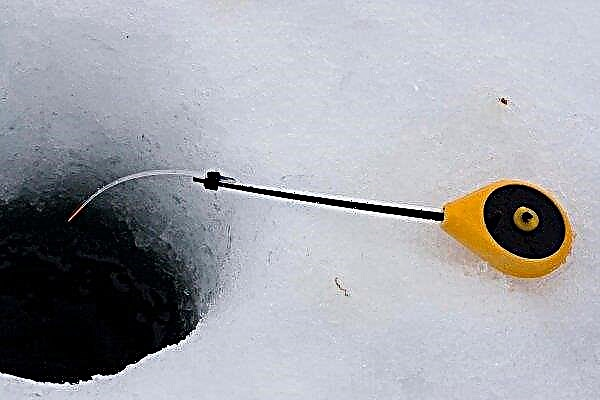Potato harvest depends on many factors taken into account by the gardener when planting and caring for the garden. One of the most important conditions for obtaining a high-quality, plentiful crop of tubers is to observe crop rotation in the garden, as well as the proximity of cultivated crops.
The importance of crop rotation
Each culture has its own set of diseases and insect pests. A long stay of the plant in the same place creates an ideal environment for their development: spores of fungi and insect eggs safely survive the winter after harvesting and next year the gardener spends more time fighting the ailments of his plantings.
Garden plants can belong to the same family, for example, potato and tomato - nightshade; all types of cabbage, radish, radish are cruciferous, etc. And this means that one must take into account both the sequence and the proximity of plants, since related plants have the same diseases and pests. Each plant has its own specific effect on the composition and structure of the soil. Some crops deplete the soil, absorbing nutrients, while others, on the contrary, saturate it and contribute to loosening. Also, most plants contain volatile substances called biologists colins and phytoncides. Both groups of substances have an effect on the composition of the soil (in particular, on the microorganisms located in it), and on other crops. The action of substances is selective, for example:
Each plant has its own specific effect on the composition and structure of the soil. Some crops deplete the soil, absorbing nutrients, while others, on the contrary, saturate it and contribute to loosening. Also, most plants contain volatile substances called biologists colins and phytoncides. Both groups of substances have an effect on the composition of the soil (in particular, on the microorganisms located in it), and on other crops. The action of substances is selective, for example:
- Onions, garlic destroy spores of fungi in the soil.
- The apple tree oppresses most stone fruit crops, peas.
- Poplar trees inhibit the planting of oats, slow its growth and development
- Marigolds, wormwood and nasturtium scare away insects.
Did you know? The popularity of potatoes, as well as other innovations introduced by Peter I among the population of Russia, was hindered by the Old Believers. One of the fables distributed among the people was the (supposedly popular) legend that for the first time a vegetable grew on the grave of a diabolical harlot.
The best predecessors for potatoes
In the crop rotation in the garden, potatoes have a fairly large list of suitable predecessors.
Leafy vegetables and greens
In the group of greens and leaf crops grown in front of potatoes, These plants are distinguished:
- salad and spinach - improve the beneficial microflora of the soil;
- mustard - enriches the soil with phosphorus, inhibits weeds;
- horseradish and coriander - inhibit spores of fungi in the ground;
- nettle - saturates the soil with iron;
- parsley, basil, marjoram, thyme - insect repellents.
 Cabbage, all its species, does not have diseases similar to potatoes, therefore it is quite suitable as a predecessor, as well as a follower in crop rotation. Potato cleans the soil from spores of the kila (fungal disease of cabbage), which affects cruciferous vegetables.
Cabbage, all its species, does not have diseases similar to potatoes, therefore it is quite suitable as a predecessor, as well as a follower in crop rotation. Potato cleans the soil from spores of the kila (fungal disease of cabbage), which affects cruciferous vegetables.Legumes
Legumes have a property that is useful for the soil: they enrich the soil with useful elements and loosen it. Peas, soybeans, beans - these crops leave a reserve of nitrogen, phosphorus and potassium in the soil.
Important! Feed cereals have a rooted root system, which loosens the earth, improving its water and air permeability. After mowing, the straw of these herbs is embedded in the soil as fertilizer before planting.
The same regenerative function is performed by perennial herbs of the legume family:
- alfalfa;
- vetch (spring and winter);
- sainfoin;
- seradella;
- clover.

Roots
Beets and celery root are considered light crops, after which you can plant any vegetables, including tuber. Carrots, radishes, radishes - plants that are undemanding to nutrition, therefore weakly depleting the soil.
Did you know? Despite the fact that South America is considered the birthplace of potatoes, neighboring North America got acquainted with the culture half a century later than Europe. The Governor of Bermuda sent a vegetable as a gift to the Governor of the US state of Virginia.
Fruit and berry plants
Suitable early plantings are early vegetables, such as:
- zucchini;
- zucchini;
- pattison.
 Crops practically do not attract insects to the beds
Crops practically do not attract insects to the beds- Useful for subsequent planting of tubers are cereals:
- oats;
- rye;
- barley.
Firstly, this is a completely different group, a different family, there are no common diseases and pests with potatoes. Secondly, siderates saturate the earth with essential minerals, attract beneficial insects. Cereals inhibit the growth of weeds, improve the structure of the soil and the activity of beneficial microflora.
Important! Strawberries and solanaceous crops have common insect pests, the circulation of these plants in the garden is contraindicated.
Strawberries and raspberries, frankly bad predecessors. Both berries "suck" a maximum of nutrients from the soil. Sweet fruits attract slugs, different types of flies and subsoil pests: the bear, wireworm.
What vegetables are better not to plant after potatoes
Potatoes are called one of the "heavy" vegetable crops. The plant depletes soil reserves of nitrogen, potassium and phosphorus, so planting other vegetables after it is extremely undesirable. An ideal follower would be any of the siderates or legumes. After tubers, you can plant "light" beets, carrots
After tubers, you can plant "light" beets, carrots
- You can not plant other solanaceous plants after tuberous vegetables:
- tomato;
- bell pepper;
- tobacco;
- eggplant.
Suitable neighbors for culture
Tubers in moist soil may begin to rot, therefore the best neighbors for vegetables in regions with high rainfall are:
- leafy vegetables - cabbage, horseradish, mustard, salad;
- greenery - spinach, dill, parsley;
- roots - radish, carrots.
 Onions and garlic inhibit the spores of fungi, which makes them suitable for tubers as neighbors and predecessors as well. These onion plants in 2-3 years of cultivation in one place scare away most harmful terrestrial insects (aphids, Colorado potato beetles), preventing the deposition of larvae in the ground. Given the potato's need for minerals, it is recommended that it is close to the pumpkin, which saturates the soil with the necessary elements.
Onions and garlic inhibit the spores of fungi, which makes them suitable for tubers as neighbors and predecessors as well. These onion plants in 2-3 years of cultivation in one place scare away most harmful terrestrial insects (aphids, Colorado potato beetles), preventing the deposition of larvae in the ground. Given the potato's need for minerals, it is recommended that it is close to the pumpkin, which saturates the soil with the necessary elements.Flowers have the same ability to restore food reserves in the soil:
- gladiolus;
- cloves;
- roses.
The correct alternation of vegetables in the garden helps the gardener to normalize the balance of useful elements in the soil, improve the soil structure, the activity of beneficial microorganisms. These factors, in turn, will significantly increase the quantity and quality of future crops.












